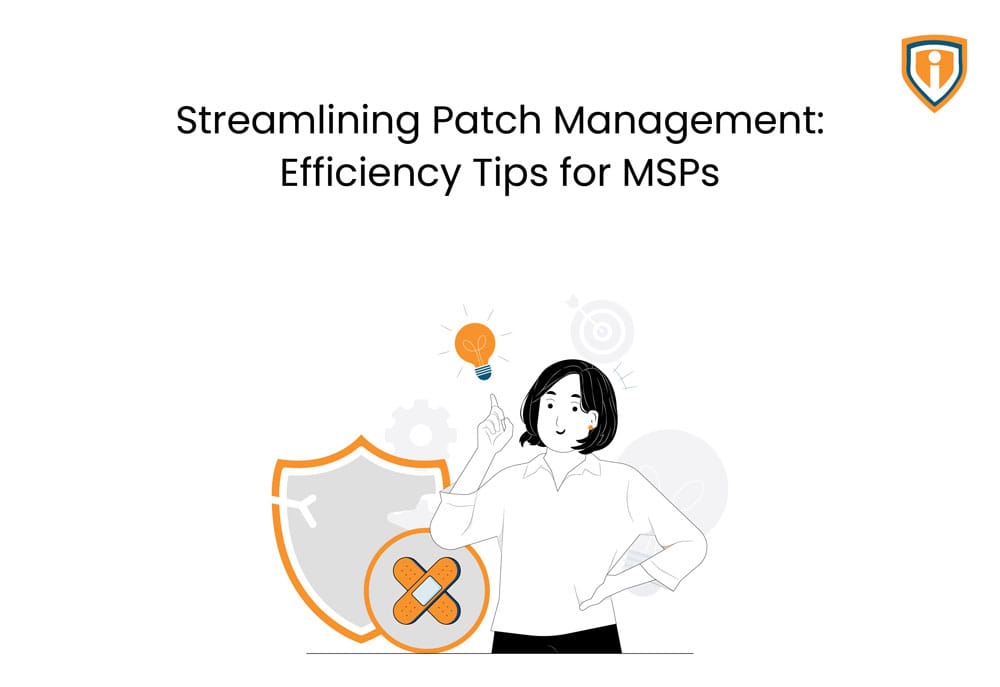A robust patch-management process that involves routine patch installation promptly is the most effective strategy to avoid a patching security compromise, with time being the essential concern.
According to a Ponemon analysis, concentrating on patching can cut the probability of a breach by 41%.
The ideas below are patch-management best practices that will assist mid-market organizations in keeping their networks and systems entirely safe.
Consider these patch management best practices.
With growing worries about cybersecurity, an effective patch management policy based on best practices is critical for keeping your customers’ computer environments secure. For a successful plan, your firm should guarantee that the following patch management techniques are implemented:
- Removal of manual processes
Manual procedures continue to exist in an age when automation should have been the backbone of every IT function. The same Ponemon survey found that 55% of firms spend more time traversing manual processes than responding to problems.
An automated patch remediation method saves time between patch release and patch installation. It enables automatic patch scheduling by time, computer, group, or user-defined collection of computers. It successfully monitors and maintains patch compliance by scanning networks for installed and missing security updates, detecting vulnerabilities, and monitoring and maintaining patch compliance.
- Software Combination
Patching gets more complicated when consumers utilize various software versions. As a result, simplifying and consolidating software is a crucial patch management strategy. It promotes internal cohesiveness while reducing administrative costs by ensuring that many unique applications or apps are not used concurrently for the same function. Limiting software alternatives and selecting all-in-one MSP software lowers the required fixes, which helps reduce vulnerability and risk.
- Using a single terminal to patch
MMEs should prioritize the implementation of an “all-in-one” endpoint solution that provides centralized control of all security operations, including detection, prevention, and response, across all endpoints, on-premises and off-premises.
Organizations typically deploy many patch management tools for operating systems, settings, and applications. On the other hand, large organizations have adequate human resources in the form of SOC (Security Operations Center) staff to deal with their security challenges. MMEs, on the other hand, should search for a single patch management system for MSP that requires less time and resources to address their security needs, allowing them to focus on their primary business duties.
It offers unified administration, comprehensive visibility, and scalable automation, allowing you to install, deploy, and upgrade your Windows, Mac, and Linux systems.
- System Inventory should be accurate.
If your MSP’s inventory of network-connected hardware and software components must be more accurate, ensuring that the appropriate devices and apps are patched becomes exceptionally challenging. Running regular scans of a network’s system and asset inventory can provide continuing insight that can assist in correctly advising when fixes need to be deployed.
- Remain Updated
Third-party tools are commonly used in networking setups, implying that maintaining up-to-date vendor patch announcements is critical for successful patch management and security. You may quickly sign up to get security updates from the right third-party providers if you have an accurate and frequently updated asset inventory. To guarantee these changes are noticed, you can generally have them forwarded to a specific email address or a chosen communication channel.
- Be aware of patch exceptions.
It is reasonable to expect that you will be required during patch deployment that requires modifications to work correctly or that cannot be implemented quickly at some time. Because this might be time-consuming, attempt to keep the relevant asset as safe as possible until you can distribute the fix. When high-value assets (such as servers) are not patched, they are vulnerable to further vulnerabilities.
- Dismantle Silos
Patches have to go through a process of approval, deployment in a test environment, or other processes before they can be made available. Organizations waste about 12 days implementing a patch due to team coordination challenges. It assists by allowing the creation of policy profiles for the automated acceptance, review, and rejection of patch updates. VSA can make updating easier by using defined, scalable profiles to accept, deny, or grant machine connections.
- Prepare ahead of time.
Preparation is essential when it pertains to patch management. While many patches are published infrequently in response to newly found issues, an MSP can prepare for some recurring upgrades. For instance, Microsoft and other large software companies use “Patch Tuesday” on the second Tuesday of each month to deliver critical software updates. Knowing this is about to happen, an MSP may prepare to test those upgrades on several client systems before coordinating their rollout to all systems later that week.
Another benefit of advanced scheduling is that it enables an MSP to better prepare for potential patching downtime by planning it for more reasonable periods, like the weekend or at odd hours.
Final Takeaway
Patching is only one component of a security program. Still, it is critical in decreasing vulnerabilities and threats: manual processes, isolated technologies, and a lack of resources to patch timely harm mid-market firms. Investing in an effective patch management system may lower the chance of breach and have a secure network.



